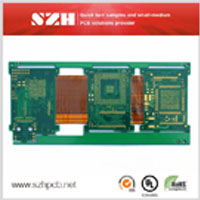
FlexTech Alliance, the industry consortium fostering the growth, profitability, and success of the flexible and printed electronics supply chain, welcomes the U.S. Government’s selection of flexible hybrid electronics (FHE) as the next topic for a Manufacturing Innovation Institute (MII). FHE was one of several topics under consideration and joins eight other technologies already identified for MIIs. The location and lead organization for the FHE MII will be chosen through a competitive process led by the Department of Defense, which expects to allocate $75M over a five year period to support the new institute. A minimum 1:1 cost share is required, valuing the new enterprise in excess of $150 million.
“FlexTech applauds the U.S. Government for selecting FHE among many worthy manufacturing topics,” stated Michael Ciesinski, president and CEO of FlexTech Alliance. “We are especially grateful to FlexTech’s members, and academic and industry partners, who responded to the MII Requests for Information and made the case for FHE.”
This MII will help bridge the gap between applied research and product development in flexible hybrid electronics by bringing together companies, universities, R&D centers, and Federal agencies to co-invest in key technology areas. All will share assets and equipment to design, test, and pilot new products and manufacturing processes. The MIIs also provide a unique opportunity for education and training, job creation, and other forms of economic development.
The White House announcement explained that FHE combines advanced materials that flex with thinned silicon chips to produce the next generation of electronic products seamlessly integrated into the things around us. These include items as diverse as comfortable, wireless medical monitors, stretchable electronics for robotics and vehicles, and smart bridges capable of alerting engineers at the first signs of trouble. For the nation’s warfighters, these new technologies will make lifesaving advances and improve mission effectiveness.
“Flexible hybrid electronics are the building blocks of the next generation of devices, combining printed devices such as sensors with ultra-thin silicon technology on many types of flexible substrates which will be ubiquitously embedded in many products impacting our lives profoundly,” stated Malcolm Thompson, chief technologist of FlexTech Alliance and president of the Nano-Bio Manufacturing Consortium (NMBC).